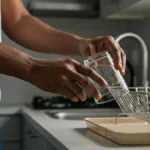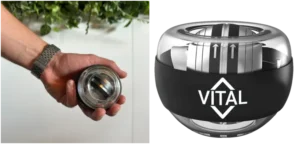Improperly defrosting food can put your health at risk. Learn the safest methods and prevent bacterial growth.
Properly thawing food is an essential step in the food safety chain, as it prevents the growth of bacteria that can cause serious illness.
Although it is a daily practice in many homes, doing it incorrectly can seriously compromise health.
The safest method, recommended by specialists, is to transfer food from the freezer to the refrigerator, allowing for slow, controlled defrosting.
This procedure keeps food out of the temperature “danger zone”—between 4°C and 60°C—a range in which bacteria multiply rapidly.
Avoid the risk zone: temperature matters
Keeping food at safe temperatures is vital. During defrosting, products must remain below 4°C to prevent the growth of microorganisms. According to food hygiene experts, bacteria can double in just 20 minutes if the food is in the danger zone.
For this reason, it is not recommended to thaw products at room temperature or immerse them in hot water, as these practices rapidly raise the temperature of the food’s surface while its interior remains frozen. This creates ideal conditions for bacterial contamination .
Safe defrosting methods
In addition to the refrigerator, other safe methods include using a microwave—always following the manufacturer’s instructions—provided that the food is cooked immediately after defrosting, and using cold water, replacing it every 30 minutes and keeping the food in an airtight container.
Placing food in appropriate containers when defrosting in the refrigerator also helps collect any liquids released, preventing cross-contamination and keeping the environment clean. It’s recommended to keep products in their original packaging whenever possible.
Hygiene and responsible handling
Hygiene plays a fundamental role when handling thawed foods. It’s essential to wash your hands thoroughly before and after the process, as well as ensuring utensils and surfaces are completely clean to prevent the transfer of bacteria.
Meat, for example, should be thoroughly cooked once thawed, as it is particularly susceptible to contamination if not handled carefully. Furthermore, it is important not to refreeze food that has already been thawed without first cooking it.
Common mistakes to avoid
Among the most common mistakes is leaving food on the counter to “defrost quickly.” While it may seem practical, this habit poses a high risk of food poisoning. You should also avoid defrosting food in hot water or direct sunlight.
Incorporating safe defrosting practices not only preserves the flavor and texture of food but is also an effective measure to protect the health of the entire family. Adopting these habits is a simple but powerful step toward improved food safety at home.























+ There are no comments
Add yours